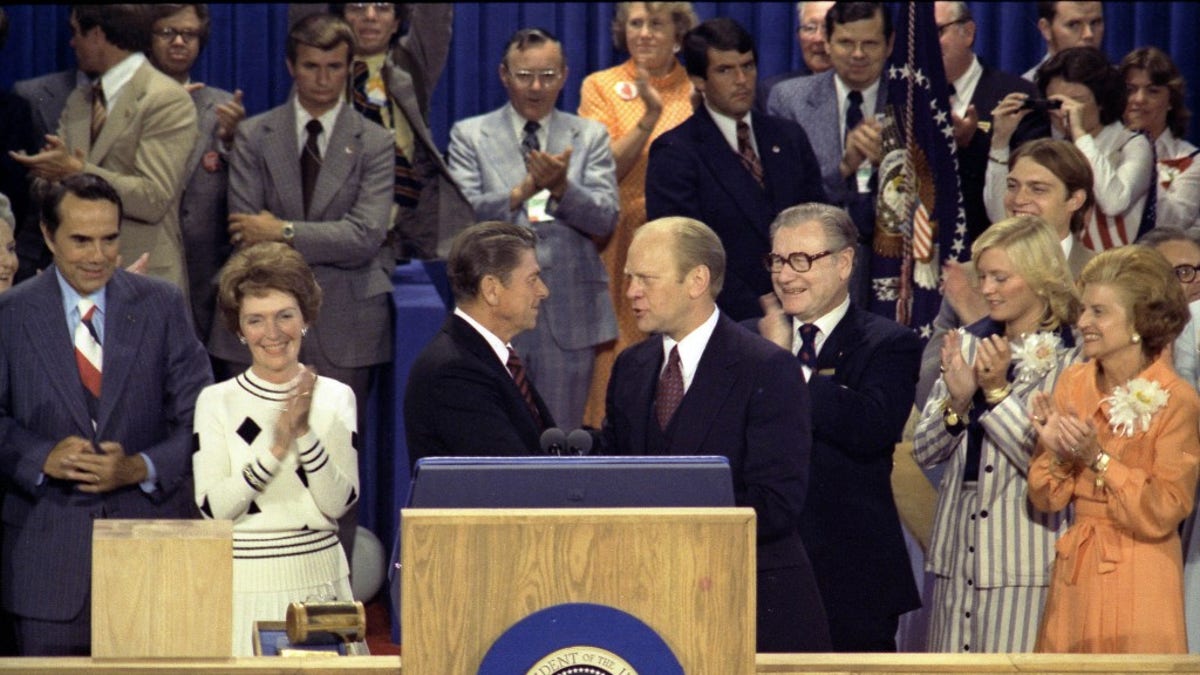
(AP)
The last Republican convention that opened where no candidate had a majority of the delegates was the 1976 convention battle in Kansas City between incumbent President Gerald R. Ford and former California Gov. Ronald Reagan.
The primary had seesawed back and forth. Ford won the early contests in New Hampshire, Florida, Massachusetts, Illinois and Wisconsin and by the end of April had nearly half the delegates needed for the nomination.
Then Reagan won North Carolina. Even he was surprised, having flown out of the state early. The California governor then took Texas and Indiana. By the middle of May, Reagan was the frontrunner.
Ford stormed back in May and Michigan before Reagan took his home state. Ford answered with victories in Ohio and New Jersey as the primary season closed out. Neither man had the 1,130 needed for nomination: the balance lay with about 150 uncommitted delegates, many in the Mississippi and Pennsylvania delegations.
Knowing he was falling behind as Ford effectively cultivated delegates by inviting them to state dinners, to enjoy flights on Air Force One, and that year’s Bicentennial celebrations, Reagan took not one, but two bold yet dangerous steps.
Just before the convention, he named liberal Republican Sen. Richard Schweiker of Pennsylvania as his running mate in an attempt to sway his state’s uncommitted delegates. Then his team forced a floor fight over a change to the party’s rules that required all candidates to name their running mates before balloting for the presidential nomination began.
The proposal served as a test vote that would show the support each candidate had. The Reagan forces felt that many of the uncommitted delegates and some pledged to Ford would stand with them in forcing Ford to name his running mate.
Since Ford had previously picked New York Gov. Nelson Rockefeller to serve as his vice president after Ford assumed the presidency following Richard Nixon’s resignation, the Reaganites felt a similar misstep by Ford in naming a moderate running mate would break the convention wide open.
After a spirited debate, the roll was called. Florida and Mississippi passed and when the final state was called, neither the Reagan or Ford forces had a majority. The chair then called on Florida again. The Sunshine State voted 28 ayes (for the Reagan position) and 38 nays (for the Ford position), giving the Ford forces a 1,130 majority. Mississippi, which was operating under the unit rule binding all 30 delegates to vote as the majority dictated, then piled on, making the final total 1,070 ayes to 1,187 nays. Reagan’s pick of Schweiker failed to sway Pennsylvania delegates as they voted 14 ayes to 89 nays.
When the convention turned to the presidential nomination, Ford won a narrow 1,187 to 1,070 victory over Reagan.
Reagan gave a gracious concession speech that, while unifying the party, nonetheless laid the basis for another run four years later where he defeated Jimmy Carter and became the 40th president.
